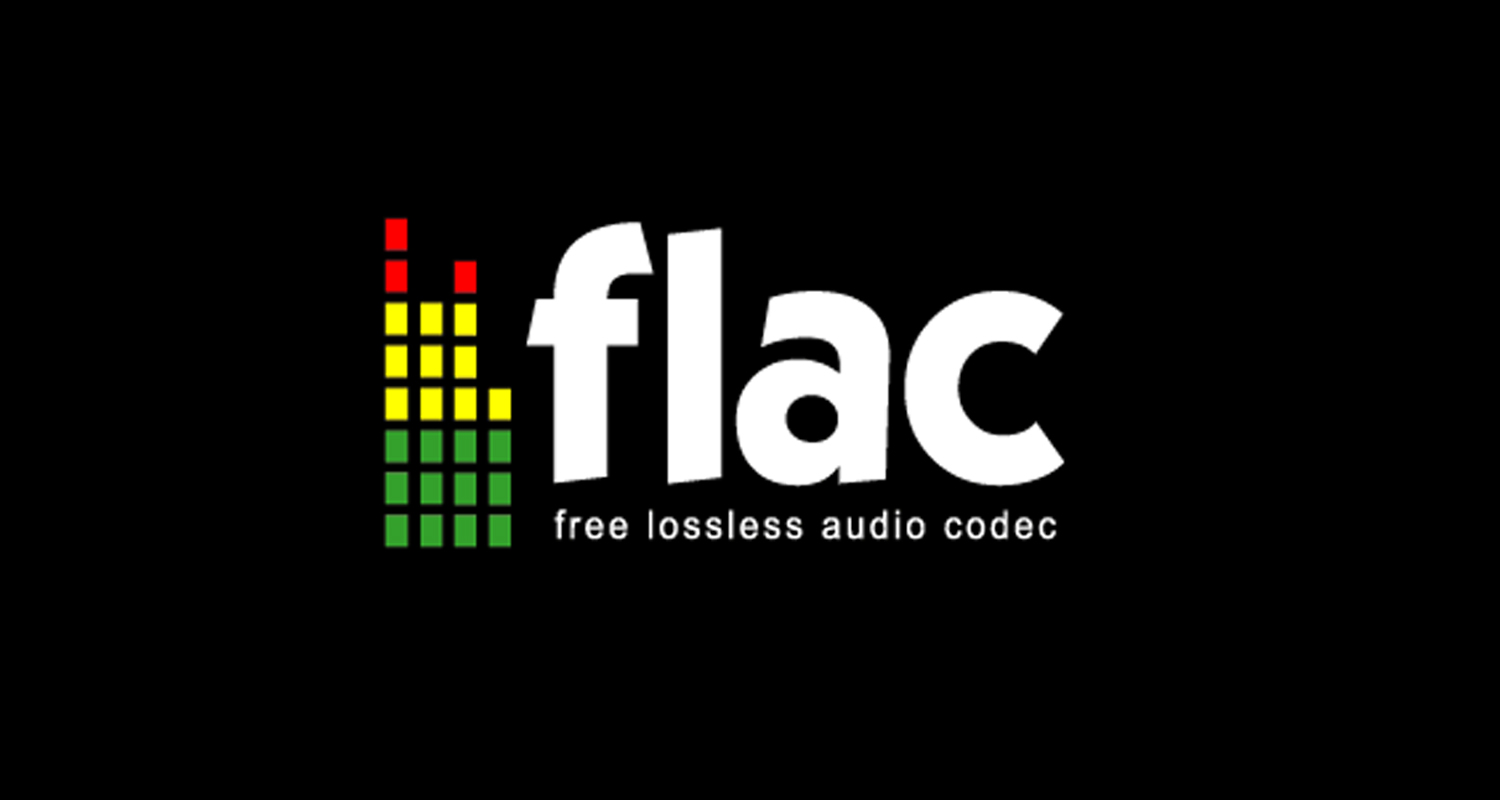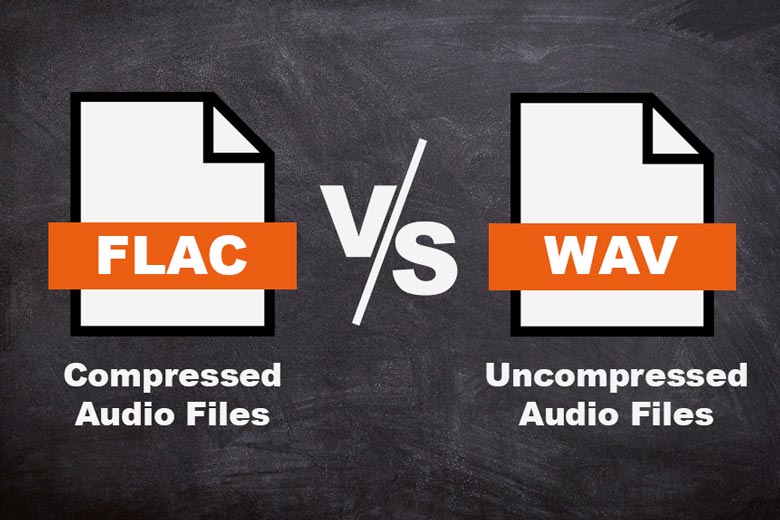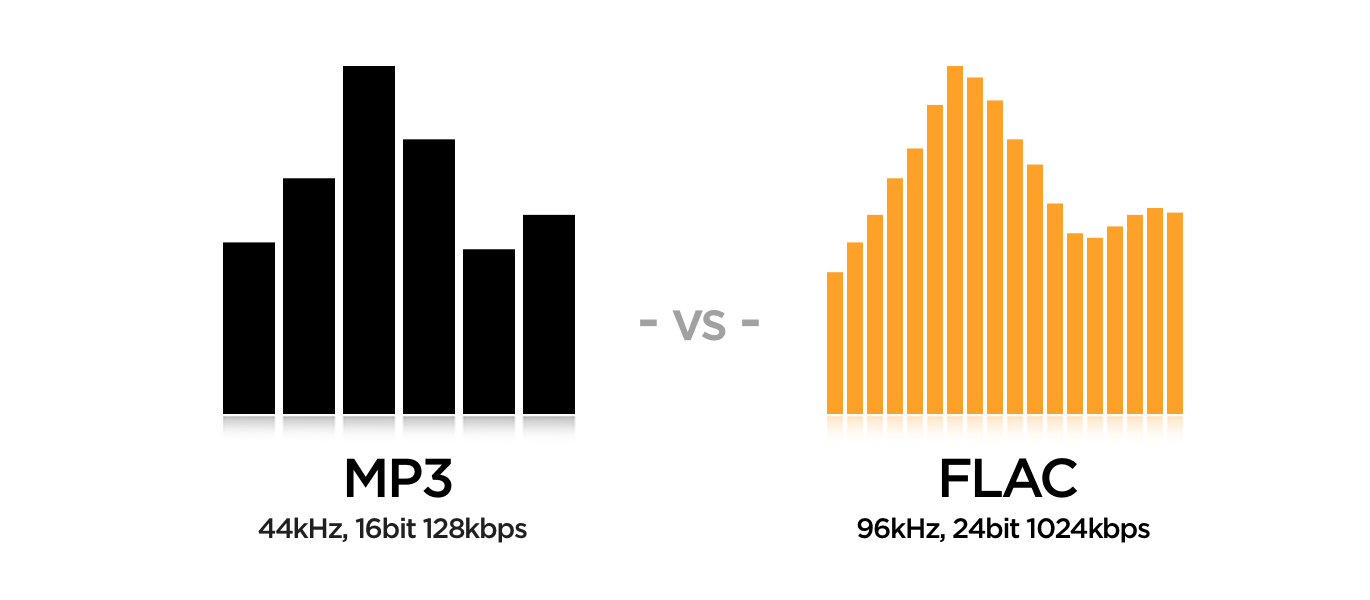FTC disclaimer: This post contains affiliate links and I will be compensated if you make a purchase after clicking on my link.
FLAC is a file format that is used to store audio files. The format is lossless, meaning it does not lose any quality when the file is compressed.
FLAC files can be played on various devices, including smartphones, computers, and portable media players.
To play a FLAC file, you must use a media player that supports the format. Many free and paid media players can play FLAC files.
What Is a FLAC File?
Free Lossless Audio Coding (FLAC) is an open-source audio compression file developed by the Xiph.Org Foundation.
It’s designed to reduce an audio file’s size without losing quality. While it doesn’t offer near the same compression level as mp3, it offers better compression ratios than many proprietary formats.
The FLAC file format uses 8 bits per sample rather than 16 bits per sample, making it ideal for storing high-fidelity music files. It supports up to 320 kHz sampling rates, whereas mp3 supports 192 kHz.
FLAC files use a patented data format known as Lacing Bytes, allowing quick access to metadata such as artist name, album art, track length, etc.
FLAC files support multiple encodings including UTF-8, UTF-16BE, UTF-16LE, UCS2BE, UCS2LE, ISO-8859-1, and ASCII.
Do you know if your device supports FLAC files?
Apple announced in September 2016 that it would begin supporting FLAC files on iPhones.
Users could play FLAC files directly from iTunes on their devices. However, some older models don’t support FLAC playback.
So what does this mean for those who still rely on their old phones? If you’re running iOS 9.3 or earlier, you won’t be able to listen to FLAC files.
But your phone can play FLAC files natively if you’re running iOS 10 or later.
Android devices have been able to play FLAC since version 4.0.
There are many apps out there that allow you to convert FLAC files into ALAC format.
And if you’ve an Android device that supports FLAC, you shouldn’t have any problem listening to your favorite music collection.
How can I play back FLAC files?
Many standard audio players, such as VLC Media Player, Winamp, and Foobar2000, support the FLAC file format.
With Android OS version 4.0 (Ice Cream Sandwich), you can play FLAC audio files directly from an SD card without converting them. You can also transfer FLAC files over Bluetooth using the aptX compression technique.
aptX is a lossless coding technique developed by Qualcomm that enables high-quality audio transmission over Bluetooth.
Because it uses less data, aptX allows devices to transmit music wirelessly at up to twice the speed of conventional Bluetooth connections.
The aptX codec is built into many smartphones and tablets today, including Apple iPhones, Samsung Galaxy phones, and most Android models.
With the aptX codec, your phone can connect to speakers or headphones that use the same technology. This lets you listen to music without wires.
If your device supports aptX, you can play FLAC files directly from your computer. To do so, open a folder containing the FLAC file, select “Playback Options,” and choose “FLAC.” Your player will automatically start playing the file.
You don’t necessarily need a dedicated media player to play FLAC files. Most browsers support FLAC files, too, although some require plugins.
For example, Chrome requires the Adobe Flash plugin. Firefox and Opera are among those that support FLAC out of the box.
How to Open a FLAC File
You’ve downloaded a FLAC file, but how do you open it? FLAC files are a type of audio file that are popular because they offer better sound quality than MP3 files.
But, they’re not as popular as MP3 files, so not all media players can play them. Here’s a guide on how to open a FLAC file so you can start enjoying your music
FLAC stands for Free Lossless Audio Codec. This file type is designed to store audio information without compression.
While there isn’t much difference between lossy and lossless formats, FLAC offers better sound quality.
This particular format is supported by many different programs, including most music players, operating systems, and mobile devices.
Nearly every major digital audio player supports FLAC files. There are several ways to open one, depending on your device.
To open a FLAC file, you’ll need a media player that supports the file type.
Using Windows Media Player and iTunes
Windows Media Player and iTunes are popular media players that can play FLAC files.
If either of these media players is installed on your computer, you can just double-click the FLAC file to open it.
You can download a free media player that supports FLAC files if you don’t have either of these media players installed.
Using VLC Player
VLC is a popular media player available for both Windows and Mac computers. Once you’ve downloaded and installed VLC, you can open the FLAC file by double-clicking it.
Once you’ve opened the FLAC file, you can start listening to your music.
The file will start playing automatically if you’re using Windows Media Player.
If you’re using iTunes, you’ll need to add the file to your library before you can play it. To do this, click File > Add to Library in iTunes. Then, browse for the FLAC file on your computer and click Open.
Now that you know how to open a FLAC file, you can start enjoying your music.
You may consider converting your MP3 files to FLAC if you have a large music collection. This way, you can have the best of both worlds – great sound quality and small file size.
How to Convert a FLAC File
Converting a FLAC file into another format requires converting it to a different container format, such as MP3, AAC, or WAV. This process is called encoding.
There are many ways to do this, including online tools like Zamzar, Online-convert.com, Mediaconverter.org, and desktop apps like Audacity and FreeStudio.
Some require registration, some don’t, and others charge money.
Using Zamzar app
If you want to convert a single file, try out the free Zamzar app.
Once installed, it automatically detects what types of files you’ve stored on your device and lets you choose the output format you’d like to save it in.
For example, selecting “MP3” will ask whether you’d rather keep the original file intact or delete it entirely. If you go with the latter option, it’ll prompt you to confirm the deletion.
Using Online-convert.com
You can also batch convert multiple files at once using the free Online-convert.com tool. Simply drag and drop the files onto the site, and it’ll start working immediately.
Make sure to pick the correct settings for each file before clicking “Start.”
Using Media.io app
Another great resource for converting files is the free Media.io app. It works similarly to Zamzar, except it doesn’t convert anything.
Instead, it simply takes whatever files you put in its directory and displays them in a handy interface.
From here, you can either copy the URL of the converted file or download it directly to your phone or tablet.
Using Audacity or FreeStudio (for a larger project)
For larger projects, you can use a program like an Audacity or FreeStudio to convert FLAC files.
Both are easy to use, feature intuitive menus, and work well for editing metadata. FreeStudio even supports batch conversion, allowing you to convert dozens of FLAC files simultaneously.
Audacity is a powerful audio software that offers both basic and advanced features.
Its main drawback is that it costs $40, though you can find cheaper alternatives. Still, it’s worth checking out if you regularly edit audio files.
Advantages and disadvantages of FLAC
FLAC stands for Free Lossless Audio Codec, one of the most popular ways to store high-quality music online. While many people use it because it stores high-resolution sound files, it offers advantages over MP3, AAC, OGG Vorbis, and others.
Advantages of FLAC
The biggest advantage of FLAC is that it does not compress audio data.
This means you don’t lose any information when converting a FLAC into a lower-res version like MP3. Instead, FLAC stores the same amount of data as the original but compresses it to about 50% smaller.
FLAC is supported by iTunes, Spotify, Amazon Prime, Google Play, Deezer, Tidal, YouTube Red, and many other apps and platforms.
However, it isn’t compatible with every device. For example, iPhone owners can download the free FLAC Player app, while Android users must rely on third-party software.
Another reason FLAC might be useful is that it doesn’t require much processing power. Unlike MP3, FLAC doesn’t involve complex algorithms; just a simple conversion process.
As a result, FLAC can easily run on smartphones and tablets, even those with limited resources.
Disadvantages of FLAC file
While FLAC is great for storing audio, it can sometimes have disadvantages. One major concern is that FLAC files can take up a lot of space.
If you want to save a song onto your phone or computer, you will probably want to convert it into something else first. Another issue is that FLAC files aren’t always compatible with certain devices.
You may have trouble playing FLAC songs on your car stereo or home theater system.
One thing to remember is that FLAC is a lossy format that removes some of the original data when converting it into another format. This is fine if you want to play the song again later, but it could mean losing some fidelity if you plan to listen to it on a different device.
If you are looking for a way to store high-quality audio without worrying about compression, FLAC is worth checking out. You can learn more about it here.
Who should use FLAC?
FLAC stands for Free Lossless Audio Codec. It is a lossy compression format that offers high-quality sound without compromising space.
It is ideal for anyone who wants to share digital music online – via social media, email, or even downloading to a portable device.
The main reason people choose FLAC over MP3 is that it uses less space.
However, there are some downsides to storing files in this way. For example, you won’t be able to play the same song twice on the same device.
Also, you’ll lose the ability to edit the file once it has been converted into a different format.
However, since most modern devices support both formats, it doesn’t matter which one you use.
If you’re looking for a free option, try Audacity, a cross-platform application that allows you to convert MP3s to FLAC.
Differences between FLAC and WAV, and what are they?
FLAC stands for Free Lossless Audio Codec. This is a lossless audio compression format. It compresses files without losing any bits of data. If you want to know how it works, read on.
WAV stands for Waveform Audio File Format. It is an uncompressed audio file format. It stores audio on PCs, and it does not compress the sound.
When we talk about compressed audio, we mean MP3, OGG Vorbis, AAC, etc. These types of files reduce the size of a song by reducing the number of samples per second. They do not lose any information. But unlike FLAC, they cannot store music perfectly.
FLAC is different because it can store high-quality music. It does not lose any information.
It saves up to 96 kHz sampling frequency. So, it provides better quality. It takes up less space than WAV.
But there is one disadvantage. FLAC requires more computing power. Because it uses a PC to play music, it needs RAM memory. And since FLAC uses a PC, it usually requires more storage space.
So, while FLAC is good for storing music, WAV is good for playing music.
Difference between FLAC and MP3
FLAC stands for Free Lossless Audio Codec, while MP3 stands for MPEG Layer 3.
Both are audio formats used for storing music and sound recordings. However, there is a huge difference between both of them.
You need to understand what lossy and lossless mean. A lossy file is one where certain information is lost during compression.
This makes it smaller and easier to store; however, the quality of the original data cannot be recovered. An example of such a file is a JPEG image.
On the other hand, a lossless file does not lose any information. As a result, it is larger than a lossy file. But the quality of the original file is retained. An example of such an audio file is WAV.
In short, FLAC is a lossless audio codec. MP3 is a lossy audio codec.
How Is FLAC Better Than MP3?
FLAC stands for Free Lossless Audio Codec. This format offers a high level of audio fidelity without losing any data.
FLAC is considered the highest quality digital music format available today.
MP3 is short for MPEG Layer 3. This popular standard uses lossy compression algorithms to reduce the size of the song while still retaining most of the original information.
However, MP3 does lose some of the finer details of the recording, resulting in a less accurate reproduction of the original track.
WMA is another popular format used for storing songs. It is similar to MP3 in many ways, but there are differences.
For instance, WMA supports multiple audio channels, whereas MP3 only allows mono tracks. WMA also adds support for metadata tags, allowing you to store additional information about the song.
CDA is a proprietary format that stores compressed audio data on CDs.
Although it can produce very small files, CDA is generally not recommended because it is difficult to edit. iTunes and Windows Media Player now support a newer format called AAC.
Is FLAC worth it?
Whether or not to convert music to FLAC format has been debated since the format was introduced in 2001.
Many audiophiles believe that FLAC is superior to MP3 because it preserves audio quality while compressing the file size. Others argue that the lossy compression used in FLAC makes the resulting audio inferior to MP3.
While there are no hard facts about how much better FLAC sounds over MP3, many agree that the difference is noticeable.
FLAC might be worth considering if you’re looking for something to listen to on your phone, tablet, laptop, or desktop.
Conclusion
FLAC is a great option to store your music files in lossless quality. If you have a large music collection, you may want to consider converting your files to FLAC to save space.
You can use a free program like Foobar2000 to convert your files and play them back.











